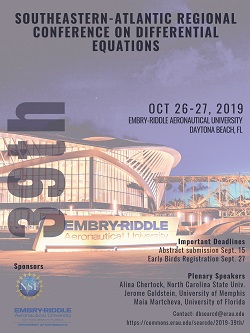Institution
Georgia Southern University
Abstract
An interesting topic for investigation in the study of stochastic differential equation epidemic models involving Brownian motion perturbations concerns the permanence of disease and existence of a stationary behavior for the state of the stochastic process over time. Conditions for the permanence of the disease hold the key to understand the endemic behavior of the disease; a stationary distribution leads to knowing the statistical properties of the disease over long time. This talk discusses a class of Ito stochastic differential equation SEIRS epidemic models for vector-borne diseases e.g. malaria. Lyapunov functional techniques and some local martingale characterizations are applied to find persistence conditions for the disease by examining the average behavior of all sample paths of the system over time. Moreover, the conditions for the existence of a stationary distribution for the SEIRS system are presented. Furthermore, the stationary distribution is explored numerically.
The Stochastic Permanence of Disease and the Stationary Behavior for a Class of Nonlinear SEIRS Epidemic Models
An interesting topic for investigation in the study of stochastic differential equation epidemic models involving Brownian motion perturbations concerns the permanence of disease and existence of a stationary behavior for the state of the stochastic process over time. Conditions for the permanence of the disease hold the key to understand the endemic behavior of the disease; a stationary distribution leads to knowing the statistical properties of the disease over long time. This talk discusses a class of Ito stochastic differential equation SEIRS epidemic models for vector-borne diseases e.g. malaria. Lyapunov functional techniques and some local martingale characterizations are applied to find persistence conditions for the disease by examining the average behavior of all sample paths of the system over time. Moreover, the conditions for the existence of a stationary distribution for the SEIRS system are presented. Furthermore, the stationary distribution is explored numerically.


Comments
View Parallel Session